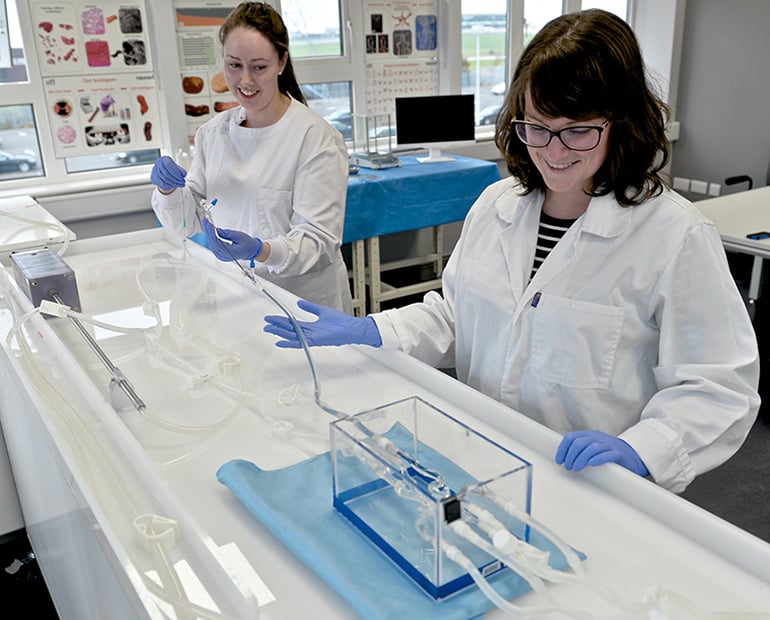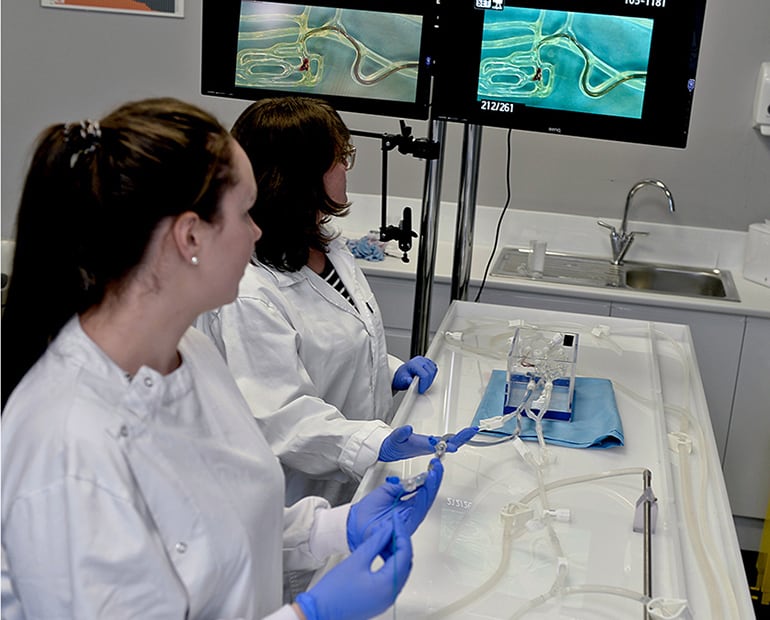
Characterisation & modelling of thrombi in acute ischaemic stroke

Endovascular treatment
CERENOVUS, from the Johnson & Johnson Medical Devices Companies, is a global leader in neurovascular care. Its commitment to changing the trajectory of stroke is inspired by its long heritage and dedication to helping physicians protect people from a lifetime of hardship. The company offers a broad portfolio of devices used in the endovascular treatment of hemorrhagic and ischemic stroke. A key component of CERENOVUS’s innovation strategy for developing novel devices for neuro-interventional therapy is understanding the dynamics of the blood clots and occlusions that cause strokes.
Postgraduate research
CERENOVUS approached the MET Gateway about establishing a PhD programme focussing on the characterisation and modelling of thrombi in acute ischaemic stroke and the associated implications for therapy. MET Gateway personnel identified Dr Sharon Duffy (currently working as a clinical research engineer with the company), a GMIT Medical Science graduate and in collaboration with the company secured funding from the Irish Research Council Employment-Based Postgraduate Programme. The research programme focussed on a number of key factors influencing the treatment of stroke which generated new knowledge on the relationship between clot properties and current endovascular therapies.

1
global leader in neurovascular care
4
peer review published papers
17
international partners
“Dr Duffy’s PhD was an outstanding success for us. All of her work was directly relevant to our ongoing research work in stroke, and her publications have had a big impact not only for Cerenovus as a company but are changing the way people are thinking about stroke therapy.”
Michael Gilvarry
General Manager, CERENOVUS
The CERENOVUS & MET partnership
In collaboration with Beaumont Hospital, investigations were conducted of clot fragments retrieved in individual stroke cases and the number of attempts required to retrieve the clot. The knowledge generated from this ‘per-pass’ study of acute ischemic stroke has generated more informative data regarding thrombus composition, recanalisation outcomes and a possible approach to analysing thrombi in the future.
Additionally, Dr Duffy characterised a number of CERENOVUS’s clot analogues that replicate acute ischemic stroke occlusions in vitro. Among other applications, these clot analogues have been used for design verification testing of the company’s devices. Ultimately this IRC co-funded project with CERENOVUS provided greater knowledge on the relationship between thrombus composition and endovascular therapies for acute ischemic stroke.